The Gitzo GT5563GSUS Systematic Tripod is the best heavy-duty tripod right now. It’s strong, durable, and can support the heaviest camera and lens setups. It’s the perfect choice for shooting epic landscapes and wildlife. [Note: ExpertPhotography is supported by readers. Product links on ExpertPhotography are referral links. If you use one of these and buy something, we make a little bit of money. Need more info? See how it all works here].
Finding the Best Heavy-Duty Tripod
What do we mean by heavy duty? A heavy-duty tripod has to be tough, strong, and rugged. It needs to have excellent built quality. And it has to be able to support your camera with heavy lenses attached. You could buy a cheap travel tripod. But what if the tripod buckles under the weight of your heavy camera? That’s a nightmare scenario. It’s a waste of time, money, and effort. It’s best to buy a tripod you know you can rely on. That’s why you need a heavy-duty tripod. The key features we focus on are build material, maximum load capacity, and tripod height. These three specs give you a good indication of whether the tripod meets your photography needs or not. Here’s a quick look at the seven best heavy-duty tripods right now. We’ll go into more depth on each tripod in the next section.
Best Heavy-Duty Tripod in 2023
Here’s our list of the best heavy-duty tripods on the market. If you want to know what to look for in a heavy-duty tripod, read our buyer’s guide at the end of this article. The Gitzo GT5563GS Systematic Series 5 is a carbon fiber tripod. It’s in a class of its own in terms of load capacity, maximum height, minimum height—and price! It’s a serious piece of equipment you can use for professional landscape or wildlife photography. Its nickname is “Giant” because it can support up to 88 lbs (40 kg) of camera gear. This is even at heights of 3.9 inches (10cm) up to 109.4 inches (2.78 m)! But that comes with a massive compromise in terms of weight and length. It tips the scales at 7.8 lbs (3.56 kg). And it only folds down to 28.7 inches (73 cm). The general design is similar to the less expensive GT3543LS. It has Carbon eXact Tubing, G-Lock Ultra Twist locks, and an Easy Link attachment port. But the legs come in six sections. So don’t try setting this one up in a hurry! The specifications are second to none. But stability at this level doesn’t come cheap. It’s an expensive tripod. But it’s also the strongest. Sometimes you just need the best of the best! The Oben CT-2491 is an affordable carbon fiber tripod. It offers a great combination of build quality, strength, and value. It can hold 39.6 lbs (18 kg) at a maximum height of 72.5 inches (184.1 cm). That gives you plenty of versatility with camera setups and shooting angles. The minimum height of 6 inches (15.2 cm) is also perfect for low-level, macro work. And it weighs only 3.5 lbs (1.6 kg). Although the folded 23.3 inches (59.2 cm) is rather long. It doesn’t come with a tripod head. But you can add the GH-30 Gimbal Head to make a rock-solid platform for sports and wildlife photography. It consists of a solid cast aluminum alloy chassis and 6x carbon fiber. And it has non-rotating legs in four sections. The twist locks are quite stiff. But the rubberized feet retract to reveal spikes for better grip on ice, snow, or sand. The only slight issue is that the center column doesn’t lock down completely to prevent it from slipping down. The French company Gitzo is probably the biggest name in high-end, heavy-duty tripods. The Gitzo GT3543LS Series 3 is a systematic tripod made of carbon fiber. It offers best-in-class vibration resistance despite its slim legs and narrow stance. But it comes with a hefty price tag! The maximum height is relatively low at 57.5 inches (1.46 m). But that won’t matter if you’re not particularly tall or plan to use a gimbal head or center column. The minimum height of only 3.5 inches (9 cm) is fine for macro work. The tripod weighs only 4.27 lbs (1.94 kg), making it the most lightweight heavy-duty tripod in Gitzo’s Series 3 lineup. It has a good load limit of 55 lbs (25 kg) and folds down to 21.6 inches (55 cm). It doesn’t include a head. But you get a 70 mm Gitzo Safe-Lock platform clamped on the side with a release button. It can be removed or replaced with a video bowl or center column. There’s also a large ballast hook under the platform. And the apex has a bubble level. The four-section Carbon eXact legs show no flex even when fully extended. They can be locked at 23, 53, or 86 degrees. And you can choose 33mm or 55mm removable feet. The G-Lock Ultra Twist locks are weather sealed. And you can twist to unlock all three locks simultaneously with only a quarter turn. It’s a real timesaver. The Neewer Style III is an aluminum tripod that comes in red and black. It’s the tallest in the Neewer range at 72.4 inches (1.84 m). But the minimum height of 25.6 inches (65 cm) is rather disappointing. It supports 33 lbs (15 kg), weighs 4.76 lbs (2.16 kg), and folds to 26.4 inches (67 cm). The panoramic ball head has an Arca-Swiss-compatible quick-release plate. It also has three adjustment knobs and two bubble levels to ensure a straight horizon. The multi-angle center column lets you adjust your shooting angle (0, 22.5, 45, 67.5, or 90 degrees). And it can be rotated 360 degrees in the horizontal position. It can also be reversed to shoot low-level macro photos. There is also an eye from which you can hang a weight for extra stability. The legs come in four sections and are made of magnesium-aluminum alloy. They have sponge grips for better grip in hot or cold weather. There are twist locks, and the legs’ angles are independently adjustable using spiral-type locking knobs. You can also use one of them as a 20.7-56.9 inches (52.5-144.5 cm) monopod or walking stick. This heavy-duty tripod was designed in Germany but built in China. The FLM CP34-L4 II is a systematic Series 3 carbon fiber tripod. And it’s relatively affordable. It offers good stability and vibration resistance. And it ticks virtually all the boxes when it comes to heavy-duty camera tripods. It has a load capacity of 72.7 lb / 33 kg. That’s strong enough for pro DSLR cameras with telescopic lenses. It can even support large cinematic video cameras. The max height is decent at 5.7 ft / 1.73 m. And it can support cameras just 4.5 inches / 11 cm from the ground. That means most photographers can find a comfortable shooting position. It measures 23.6 inches / 60 cm when folded down. It’s not the smallest tripod in the world. But this is still suitable for travel. And the 4.3 lb / 1.95 kg weight is good for a tripod of this strength. It’s one of the more portable options on this list. The 10-layer carbon fiber legs come in four sections and easily slide out of the tubes when unlocked. You don’t need to pull or shake them to reach full extension. The platform has a cork and rubber composite pad on top. This dampens vibrations and ensures a firm grip on whatever head you install. There are also three plastic screws arranged around the center that you can tighten with a hex wrench if you want even more security. Alternatively, you can remove the platform to reveal the integrated video bowl. It doesn’t come with a tripod head or column hook (just a 1/4-inch hole). And the leg locks are bare metal and hard to use in extreme cold. But it does have a bubble level on the apex, an integrated 75mm video bowl, and the option of rubber feet or 40mm steel spikes. The British-made 3 Legged Thing Winston 2.0 tripod comes in earth bronze or metallic slate grey. And it scores well in all the major categories. The head can support a maximum load of 88 lbs (40 kgs)—which is more than you could ever possibly need. The height range of 5.7 inches (14.5 cm) to 6 ft 4.4 inches (1.94 m) also lets you take pictures while standing up—unless you’re even taller than I am at 6 feet 3 inches! This 8-layer carbon fiber tripod weighs only 4 lb 8 oz (2.05 kg). The folded length of 24.1 inches (61.2 cm) is bearable unless you want to put it inside your camera bag. In that case, you’d be better off with the Leo 2.0, which folds down to just 14.7 inches (37.3 cm). Once you’ve mounted your camera, the tripod shows great stability. You can even convert it into a monopod, boom, or tabletop version. On the other hand, there’s no thread on the crown to mount accessories, like an iPhone mount. And there’s no quick-release mechanism to remove your camera. The orange or blue ZOMEi Z818 is an affordable, all-weather aluminum tripod that copes well with heavy DSLR lenses. It also converts into a monopod if you screw the center column and one of the legs together. The combination of magnesium and aluminum used in its construction means it’s quite light at 3.7 lbs (1.7 kg). The whole thing is also weather sealed using anodic oxidation. So it’s perfect for extreme conditions. The legs come in four sections. And you can hold them at three different angles. They have independent twist locks to fix or release them. You can also fold them back 180 degrees so that the whole tripod measures only 18 inches (45.7 cm). The maximum height of 65 inches (1.65 m) is a little on the low side if you’re tall. And the minimum height of 22 inches (55.9 cm) is a little on the high side if you like to get low to take wildlife or macro shots. But it has a 360-degree panorama ball head with individual head tension and lock knobs. It also has a pan lock to help you adjust it to the exact position and keep it there. Finally, you get a few useful features, like the column hook underneath the center column. And it has a convenient quick-release plate (with a built-in spirit level). It allows you to release your camera with the push of a button.
Heavy-Duty Tripod Buying Guide
If you’re buying a camera, the key factors to consider are sensor size, frame rate, and the autofocus system. If you’re buying a lens, the most important specifications are optical quality, focal length, and whether it’s zoom or a prime. In both cases, these factors are critical to your ability to do the job. And it’s the same with a tripod. Any camera shake will ruin your images if the tripod vibrates in windy conditions. If the tripod’s build quality is so poor that it’s likely to fall over, you might even lose your camera! So what are the factors to consider when buying a heavy-duty camera tripod? The tradeoffs are between size, stability, and price. You can usually get two of them, but not all three! Some specifications are dealbreakers, but some are just a matter of personal preference. It’s vital to be clear in your own mind about the differences between the two.
Dealbreakers
For myself, these must-have features for heavy-duty tripods:
Maximum Load Capacity: This must be enough for your needs. A good rule of thumb is that a heavy-duty tripod’s capacity should be 1.5x the weight of your camera and your heaviest lens. Height Range: This must match the level at which you generally want to take pictures. I’m 6 feet 3 inches tall. And there are plenty of times when I need to shoot standing up at eye level. That means I need a full-size tripod that extends to at least 72 inches. There are also times when I want to get down really low. So the lowest height has to be only a few inches. Folded Length: This is obviously not a factor when you’re shooting. But it might be vital when traveling. A security guard once banned me from taking my tripod on a plane from Buenos Aires. They classified it as an “offensive weapon!” It would have been much easier if it was compact enough to stow in my camera bag. Weight: This might also be crucial when flying abroad. When I travel with my camera bag, I always struggle to meet the carry-on limit. (Especially when it’s only 15 kg on local flights in Africa.) That’s impossible for me to make if I take all my lenses. So the last thing I need is even more weight to carry with a heavy tripod!
Personal Preferences
To me, these features fall more under preferences.
Tripod Head
The tripod head must be appropriate for the type of shots you’ll be taking:
Ball Head: This works well if you need flexibility and a quick response. Fluid Head: If you like panning shots, the greater precision and adjustability of the three-way or pan-and-tilt head might be better. Any fluid head also helps to dampen any erratic camera movements. Gimbal Head: This is perfect for keeping your camera balanced if you shoot a lot with a long lens. Nodal or Panoramic Heads: These help avoid parallax errors and stitching problems in your panoramas. “Systematic” Tripod: This has an open area at the top where the head would usually be. It lets you swap between different attachments, such as a video bowl, center column, or leveling base.
Other Tripod Features
Material: Tripods come in plastic or even wood. But aluminum and carbon fiber tripods have much better strength-to-weight ratios. But be aware that carbon fiber is expensive! Leg Diameter: Gitzo’s Series 3 heavy-duty tripod legs measure 33-36mm at the top. And that’s now a kind of industry benchmark among many manufacturers. Hooks: A hook under the center column lets you hang your camera bag underneath to add stability in strong winds. Feet: Rubber feet are generally the best for most surfaces (either indoors or outdoors). But metal spikes are better in icy conditions. Some models have both types built in. You may just have to retract the rubber feet to reveal the spikes. Center Columns: These are useful if you want to extend the height of a tripod. (And they can be turned 90 degrees or reversed to get low-angle shots.) But tripods tend to become more unstable with the center column extended. The general rule is that you should only lift the center column as the last resort. Do it only after you’ve extended the legs completely. So, you might not need one. Leg Locks: You can fix tripod legs using twist or lever locks. In theory, both types of leg locks might fail. But at least the twist locks will give you a second or two to catch your camera if the tripod starts falling over. But the only twist-lock tripod I ever bought broke the first time I used it. I had to throw it away! Number of Leg Sections: This is a tradeoff between stability and convenience. The more sections there are, the smaller the tripod is to carry. But the tripod won’t be as sturdy and will take longer to put up and take down. Leg Angles: This determines how high and stable the tripod is for a given leg length. There are usually three preset angles at which the legs click into position, such as 23, 53, and 86 degrees. Each leg lifts independently. So you can always lift one or two if you’re on uneven surfaces or there’s a tree in your way.
Conclusion
If you’re looking for a heavy-duty tripod, you can’t go wrong with Gitzo. Whether you opt for the “Giant” or the more modest GT3543LS, the design and build quality will never let you down. And that’s true wherever you are and whatever the weather. But plenty of other models cover the bases in terms of my “dealbreakers.” And they can be found for a fraction of the price. All photographers are different. We all work in different genres and environments with different cameras. I often use long telephoto lenses to take panning shots with long exposures. And I couldn’t have taken pictures of the northern lights without a stable tripod. That’s just one reason I use a heavy-duty tripod. The Gitzo GT5563GSUS Systematic Tripod is the best of the best. But 3 Legged Thing, Neewer, and FLM have excellent tripods that can handle heavy gear. Everything on this list is strong, stable, and won’t let you down. You won’t regret buying a heavy-duty tripod.










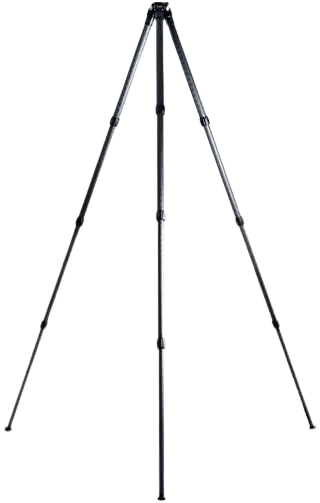

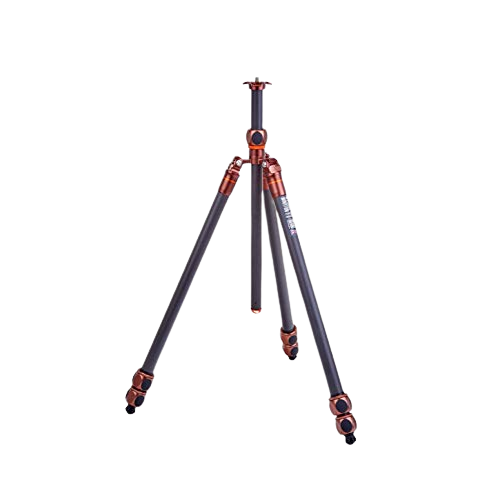
























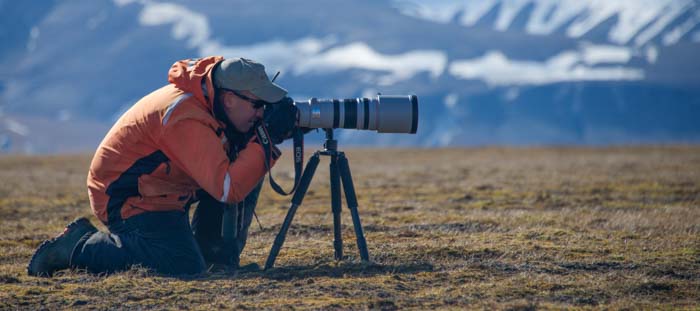
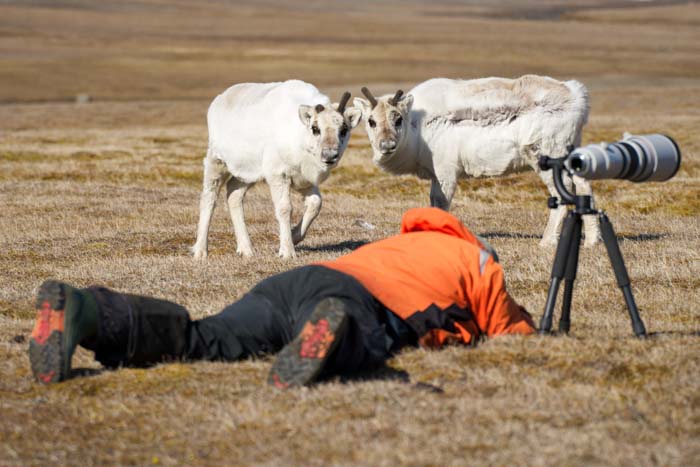
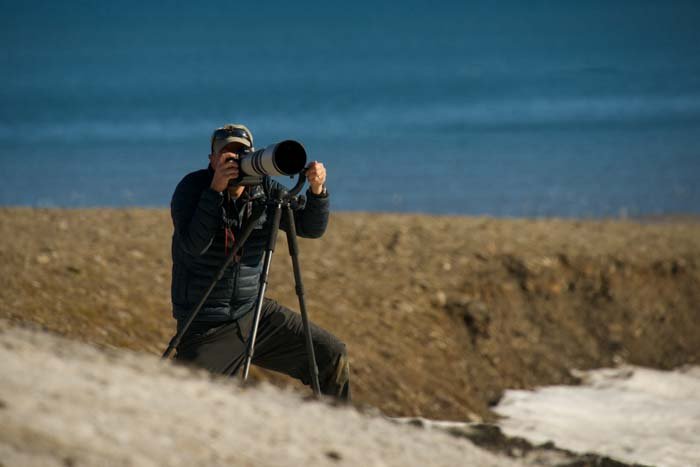
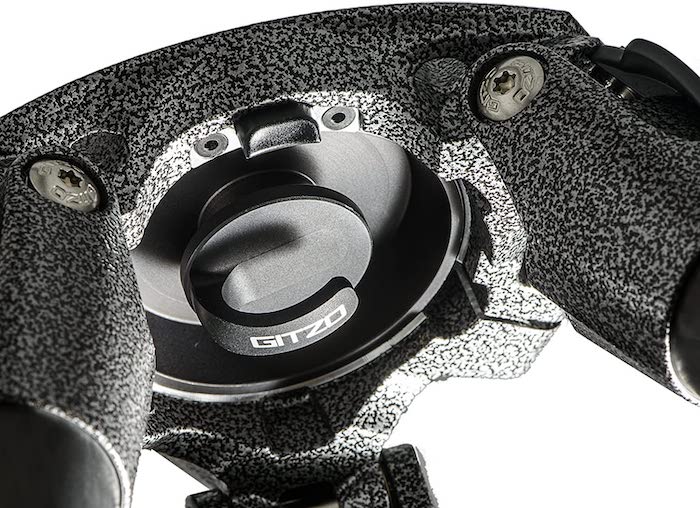


title: “7 Best Heavy Duty Tripods In 2023 For Big Lenses Cameras " ShowToc: true date: “2023-01-18” author: “Arnette Hitchcock”
The Gitzo GT5563GSUS Systematic Tripod is the best heavy-duty tripod right now. It’s strong, durable, and can support the heaviest camera and lens setups. It’s the perfect choice for shooting epic landscapes and wildlife. [Note: ExpertPhotography is supported by readers. Product links on ExpertPhotography are referral links. If you use one of these and buy something, we make a little bit of money. Need more info? See how it all works here].
Finding the Best Heavy-Duty Tripod
What do we mean by heavy duty? A heavy-duty tripod has to be tough, strong, and rugged. It needs to have excellent built quality. And it has to be able to support your camera with heavy lenses attached. You could buy a cheap travel tripod. But what if the tripod buckles under the weight of your heavy camera? That’s a nightmare scenario. It’s a waste of time, money, and effort. It’s best to buy a tripod you know you can rely on. That’s why you need a heavy-duty tripod. The key features we focus on are build material, maximum load capacity, and tripod height. These three specs give you a good indication of whether the tripod meets your photography needs or not. Here’s a quick look at the seven best heavy-duty tripods right now. We’ll go into more depth on each tripod in the next section.
Best Heavy-Duty Tripod in 2023
Here’s our list of the best heavy-duty tripods on the market. If you want to know what to look for in a heavy-duty tripod, read our buyer’s guide at the end of this article. The Gitzo GT5563GS Systematic Series 5 is a carbon fiber tripod. It’s in a class of its own in terms of load capacity, maximum height, minimum height—and price! It’s a serious piece of equipment you can use for professional landscape or wildlife photography. Its nickname is “Giant” because it can support up to 88 lbs (40 kg) of camera gear. This is even at heights of 3.9 inches (10cm) up to 109.4 inches (2.78 m)! But that comes with a massive compromise in terms of weight and length. It tips the scales at 7.8 lbs (3.56 kg). And it only folds down to 28.7 inches (73 cm). The general design is similar to the less expensive GT3543LS. It has Carbon eXact Tubing, G-Lock Ultra Twist locks, and an Easy Link attachment port. But the legs come in six sections. So don’t try setting this one up in a hurry! The specifications are second to none. But stability at this level doesn’t come cheap. It’s an expensive tripod. But it’s also the strongest. Sometimes you just need the best of the best! The Oben CT-2491 is an affordable carbon fiber tripod. It offers a great combination of build quality, strength, and value. It can hold 39.6 lbs (18 kg) at a maximum height of 72.5 inches (184.1 cm). That gives you plenty of versatility with camera setups and shooting angles. The minimum height of 6 inches (15.2 cm) is also perfect for low-level, macro work. And it weighs only 3.5 lbs (1.6 kg). Although the folded 23.3 inches (59.2 cm) is rather long. It doesn’t come with a tripod head. But you can add the GH-30 Gimbal Head to make a rock-solid platform for sports and wildlife photography. It consists of a solid cast aluminum alloy chassis and 6x carbon fiber. And it has non-rotating legs in four sections. The twist locks are quite stiff. But the rubberized feet retract to reveal spikes for better grip on ice, snow, or sand. The only slight issue is that the center column doesn’t lock down completely to prevent it from slipping down. The French company Gitzo is probably the biggest name in high-end, heavy-duty tripods. The Gitzo GT3543LS Series 3 is a systematic tripod made of carbon fiber. It offers best-in-class vibration resistance despite its slim legs and narrow stance. But it comes with a hefty price tag! The maximum height is relatively low at 57.5 inches (1.46 m). But that won’t matter if you’re not particularly tall or plan to use a gimbal head or center column. The minimum height of only 3.5 inches (9 cm) is fine for macro work. The tripod weighs only 4.27 lbs (1.94 kg), making it the most lightweight heavy-duty tripod in Gitzo’s Series 3 lineup. It has a good load limit of 55 lbs (25 kg) and folds down to 21.6 inches (55 cm). It doesn’t include a head. But you get a 70 mm Gitzo Safe-Lock platform clamped on the side with a release button. It can be removed or replaced with a video bowl or center column. There’s also a large ballast hook under the platform. And the apex has a bubble level. The four-section Carbon eXact legs show no flex even when fully extended. They can be locked at 23, 53, or 86 degrees. And you can choose 33mm or 55mm removable feet. The G-Lock Ultra Twist locks are weather sealed. And you can twist to unlock all three locks simultaneously with only a quarter turn. It’s a real timesaver. The Neewer Style III is an aluminum tripod that comes in red and black. It’s the tallest in the Neewer range at 72.4 inches (1.84 m). But the minimum height of 25.6 inches (65 cm) is rather disappointing. It supports 33 lbs (15 kg), weighs 4.76 lbs (2.16 kg), and folds to 26.4 inches (67 cm). The panoramic ball head has an Arca-Swiss-compatible quick-release plate. It also has three adjustment knobs and two bubble levels to ensure a straight horizon. The multi-angle center column lets you adjust your shooting angle (0, 22.5, 45, 67.5, or 90 degrees). And it can be rotated 360 degrees in the horizontal position. It can also be reversed to shoot low-level macro photos. There is also an eye from which you can hang a weight for extra stability. The legs come in four sections and are made of magnesium-aluminum alloy. They have sponge grips for better grip in hot or cold weather. There are twist locks, and the legs’ angles are independently adjustable using spiral-type locking knobs. You can also use one of them as a 20.7-56.9 inches (52.5-144.5 cm) monopod or walking stick. This heavy-duty tripod was designed in Germany but built in China. The FLM CP34-L4 II is a systematic Series 3 carbon fiber tripod. And it’s relatively affordable. It offers good stability and vibration resistance. And it ticks virtually all the boxes when it comes to heavy-duty camera tripods. It has a load capacity of 72.7 lb / 33 kg. That’s strong enough for pro DSLR cameras with telescopic lenses. It can even support large cinematic video cameras. The max height is decent at 5.7 ft / 1.73 m. And it can support cameras just 4.5 inches / 11 cm from the ground. That means most photographers can find a comfortable shooting position. It measures 23.6 inches / 60 cm when folded down. It’s not the smallest tripod in the world. But this is still suitable for travel. And the 4.3 lb / 1.95 kg weight is good for a tripod of this strength. It’s one of the more portable options on this list. The 10-layer carbon fiber legs come in four sections and easily slide out of the tubes when unlocked. You don’t need to pull or shake them to reach full extension. The platform has a cork and rubber composite pad on top. This dampens vibrations and ensures a firm grip on whatever head you install. There are also three plastic screws arranged around the center that you can tighten with a hex wrench if you want even more security. Alternatively, you can remove the platform to reveal the integrated video bowl. It doesn’t come with a tripod head or column hook (just a 1/4-inch hole). And the leg locks are bare metal and hard to use in extreme cold. But it does have a bubble level on the apex, an integrated 75mm video bowl, and the option of rubber feet or 40mm steel spikes. The British-made 3 Legged Thing Winston 2.0 tripod comes in earth bronze or metallic slate grey. And it scores well in all the major categories. The head can support a maximum load of 88 lbs (40 kgs)—which is more than you could ever possibly need. The height range of 5.7 inches (14.5 cm) to 6 ft 4.4 inches (1.94 m) also lets you take pictures while standing up—unless you’re even taller than I am at 6 feet 3 inches! This 8-layer carbon fiber tripod weighs only 4 lb 8 oz (2.05 kg). The folded length of 24.1 inches (61.2 cm) is bearable unless you want to put it inside your camera bag. In that case, you’d be better off with the Leo 2.0, which folds down to just 14.7 inches (37.3 cm). Once you’ve mounted your camera, the tripod shows great stability. You can even convert it into a monopod, boom, or tabletop version. On the other hand, there’s no thread on the crown to mount accessories, like an iPhone mount. And there’s no quick-release mechanism to remove your camera. The orange or blue ZOMEi Z818 is an affordable, all-weather aluminum tripod that copes well with heavy DSLR lenses. It also converts into a monopod if you screw the center column and one of the legs together. The combination of magnesium and aluminum used in its construction means it’s quite light at 3.7 lbs (1.7 kg). The whole thing is also weather sealed using anodic oxidation. So it’s perfect for extreme conditions. The legs come in four sections. And you can hold them at three different angles. They have independent twist locks to fix or release them. You can also fold them back 180 degrees so that the whole tripod measures only 18 inches (45.7 cm). The maximum height of 65 inches (1.65 m) is a little on the low side if you’re tall. And the minimum height of 22 inches (55.9 cm) is a little on the high side if you like to get low to take wildlife or macro shots. But it has a 360-degree panorama ball head with individual head tension and lock knobs. It also has a pan lock to help you adjust it to the exact position and keep it there. Finally, you get a few useful features, like the column hook underneath the center column. And it has a convenient quick-release plate (with a built-in spirit level). It allows you to release your camera with the push of a button.
Heavy-Duty Tripod Buying Guide
If you’re buying a camera, the key factors to consider are sensor size, frame rate, and the autofocus system. If you’re buying a lens, the most important specifications are optical quality, focal length, and whether it’s zoom or a prime. In both cases, these factors are critical to your ability to do the job. And it’s the same with a tripod. Any camera shake will ruin your images if the tripod vibrates in windy conditions. If the tripod’s build quality is so poor that it’s likely to fall over, you might even lose your camera! So what are the factors to consider when buying a heavy-duty camera tripod? The tradeoffs are between size, stability, and price. You can usually get two of them, but not all three! Some specifications are dealbreakers, but some are just a matter of personal preference. It’s vital to be clear in your own mind about the differences between the two.
Dealbreakers
For myself, these must-have features for heavy-duty tripods:
Maximum Load Capacity: This must be enough for your needs. A good rule of thumb is that a heavy-duty tripod’s capacity should be 1.5x the weight of your camera and your heaviest lens. Height Range: This must match the level at which you generally want to take pictures. I’m 6 feet 3 inches tall. And there are plenty of times when I need to shoot standing up at eye level. That means I need a full-size tripod that extends to at least 72 inches. There are also times when I want to get down really low. So the lowest height has to be only a few inches. Folded Length: This is obviously not a factor when you’re shooting. But it might be vital when traveling. A security guard once banned me from taking my tripod on a plane from Buenos Aires. They classified it as an “offensive weapon!” It would have been much easier if it was compact enough to stow in my camera bag. Weight: This might also be crucial when flying abroad. When I travel with my camera bag, I always struggle to meet the carry-on limit. (Especially when it’s only 15 kg on local flights in Africa.) That’s impossible for me to make if I take all my lenses. So the last thing I need is even more weight to carry with a heavy tripod!
Personal Preferences
To me, these features fall more under preferences.
Tripod Head
The tripod head must be appropriate for the type of shots you’ll be taking:
Ball Head: This works well if you need flexibility and a quick response. Fluid Head: If you like panning shots, the greater precision and adjustability of the three-way or pan-and-tilt head might be better. Any fluid head also helps to dampen any erratic camera movements. Gimbal Head: This is perfect for keeping your camera balanced if you shoot a lot with a long lens. Nodal or Panoramic Heads: These help avoid parallax errors and stitching problems in your panoramas. “Systematic” Tripod: This has an open area at the top where the head would usually be. It lets you swap between different attachments, such as a video bowl, center column, or leveling base.
Other Tripod Features
Material: Tripods come in plastic or even wood. But aluminum and carbon fiber tripods have much better strength-to-weight ratios. But be aware that carbon fiber is expensive! Leg Diameter: Gitzo’s Series 3 heavy-duty tripod legs measure 33-36mm at the top. And that’s now a kind of industry benchmark among many manufacturers. Hooks: A hook under the center column lets you hang your camera bag underneath to add stability in strong winds. Feet: Rubber feet are generally the best for most surfaces (either indoors or outdoors). But metal spikes are better in icy conditions. Some models have both types built in. You may just have to retract the rubber feet to reveal the spikes. Center Columns: These are useful if you want to extend the height of a tripod. (And they can be turned 90 degrees or reversed to get low-angle shots.) But tripods tend to become more unstable with the center column extended. The general rule is that you should only lift the center column as the last resort. Do it only after you’ve extended the legs completely. So, you might not need one. Leg Locks: You can fix tripod legs using twist or lever locks. In theory, both types of leg locks might fail. But at least the twist locks will give you a second or two to catch your camera if the tripod starts falling over. But the only twist-lock tripod I ever bought broke the first time I used it. I had to throw it away! Number of Leg Sections: This is a tradeoff between stability and convenience. The more sections there are, the smaller the tripod is to carry. But the tripod won’t be as sturdy and will take longer to put up and take down. Leg Angles: This determines how high and stable the tripod is for a given leg length. There are usually three preset angles at which the legs click into position, such as 23, 53, and 86 degrees. Each leg lifts independently. So you can always lift one or two if you’re on uneven surfaces or there’s a tree in your way.
Conclusion
If you’re looking for a heavy-duty tripod, you can’t go wrong with Gitzo. Whether you opt for the “Giant” or the more modest GT3543LS, the design and build quality will never let you down. And that’s true wherever you are and whatever the weather. But plenty of other models cover the bases in terms of my “dealbreakers.” And they can be found for a fraction of the price. All photographers are different. We all work in different genres and environments with different cameras. I often use long telephoto lenses to take panning shots with long exposures. And I couldn’t have taken pictures of the northern lights without a stable tripod. That’s just one reason I use a heavy-duty tripod. The Gitzo GT5563GSUS Systematic Tripod is the best of the best. But 3 Legged Thing, Neewer, and FLM have excellent tripods that can handle heavy gear. Everything on this list is strong, stable, and won’t let you down. You won’t regret buying a heavy-duty tripod.










































